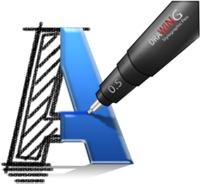What Programming Language To Study First

Programming Language
Determining which is the most broadly used programming language is tough since the definition of usage varies by context. One language might occupy the greater variety of programmer hours, a different one has extra traces of code, and a third could eat the most CPU time. Some languages are very popular for specific kinds of purposes. Other languages are frequently used to write many alternative sorts of applications. One frequent trend in the growth of programming languages has been to add extra capability to solve problems utilizing a higher stage of abstraction.
The earliest programming languages have been tied very closely to the underlying hardware of the computer. As new programming languages have developed, options have been added that permit programmers categorical concepts which are more remote from easy translation into underlying hardware directions.
So, I finally decided I would start studying from the most typical concepts of programming languages on the market. I started learning C, however I was actually head over heels since importing modules, and all those stuff often went bouncer for me. I discovered C for a month; then I thought C was a bit powerful and thus began learning Bash.
To be taught more, check out CFI’s Machine Learning – Python Fundamentals Course. It requires solely text-editors corresponding to WordPad or Notepad, IDE similar to Eclipse, Bootstrap are required in coding. Different programming languages assist completely different types of programming .

Programs pull info from databases, implement security procedures to protect non-public information, and function reminiscence backup techniques. Python is a basic-function, high-level programming language whose design philosophy emphasizes code readability. Python lets you write applications in fewer lines of code than most of the programming languages. On the other hand, procedures are virtually similar to Functions except that capabilities always return a value, whereas a process is just the execution of instructions.… Read More





